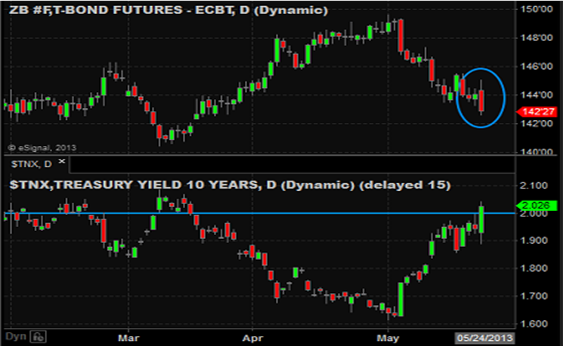The Contrarian Way to Make Money Off Rising Interest Rates
Good” vs. “Bad” Interest-Rate Increases & Why Inflation Is a Potential Value Play Right Now.
One of the points I’ve been trying to drive home about the recent increase in interest rates has not been so much the amount of increase, but rather the pace.
That’s because a slow, orderly rise in interest rates actually would be welcomed by the market. This would be considered a “good” rise in interest rates because it would reflect expected improvement in the economy and the onset of some initial inflation—both of which are exactly what the Fed is trying to accomplish.
So, that type of interest-rate rise would actually validate the Fed’s policies.
The other type of interest-rate increase is a rapid, disorderly increase, which is the result of surging inflation expectations, worries about fiscal solvency, or a mass exodus of investors from the bond market in an effort to lock in profits.
That’s what we got a whiff of in Japan last week, and that’s why the market got spooked.
So, again, it’s the pace of interest-rate increases that matters, not the fact that they are rising.
So far, the market has embraced the increase in interest rates largely as the “good” kind. Interest rates are rising because the outlook for the economy is improving and inflation expectations are starting to turn as the investment community gets more-comfortable with the idea of more-permanent economic growth.
If that plays out and we do experience the “good” type of interest-rate increases, then buying “inflation” is the value play in the market right now, because there is no inflation at the moment. But, if we are witnessing the “good” interest-rate increases, there will be inflation in the future.
So, keep an eye on inflation-linked assets like stocks generally (but again, avoid “yield-proxy” stocks), and specifically basic materials and hard-asset producers, which have lagged badly this year.
Also, gold, commodities generally, and land/real estate sectors will also outperform during a “good” increase in rates.
We aren’t there yet, so I wouldn’t be the hero and try to pile into beaten-down basic materials sectors or gold today. But, keep an eye on them (or I’ll do it for you) as they are one sector where we could all generate some alpha if interest rates continue rise in a “good” way.


